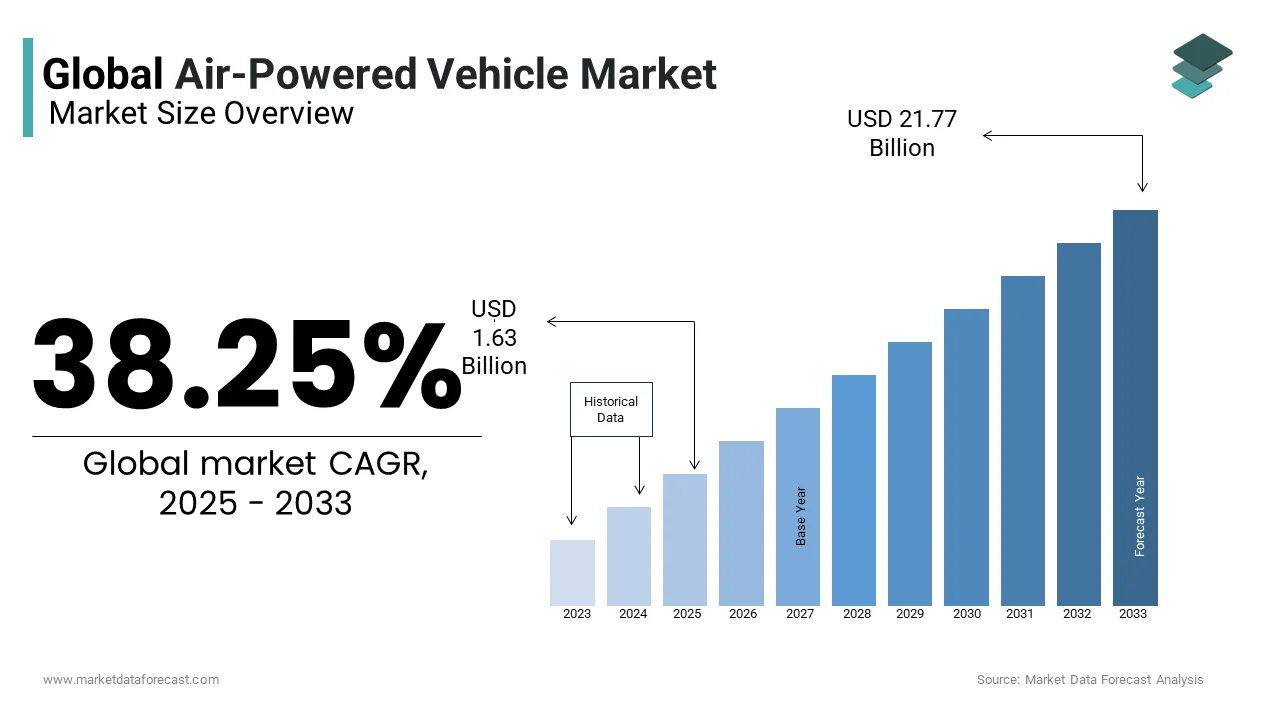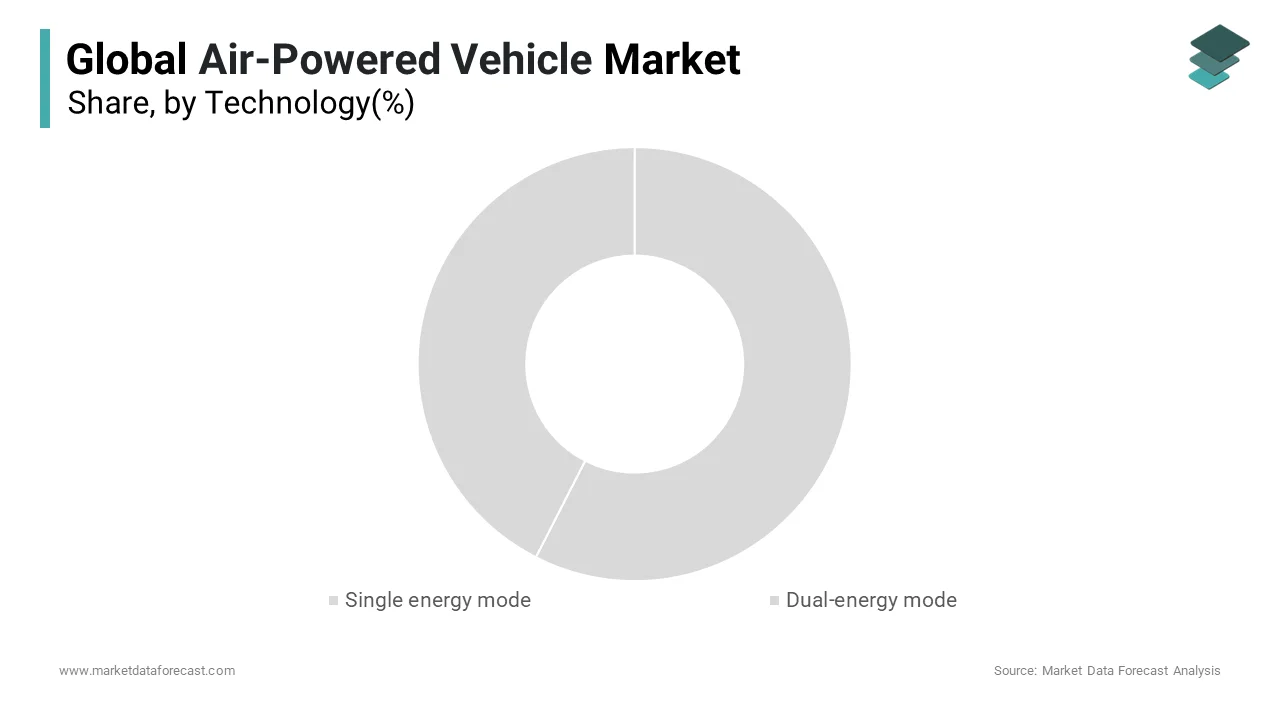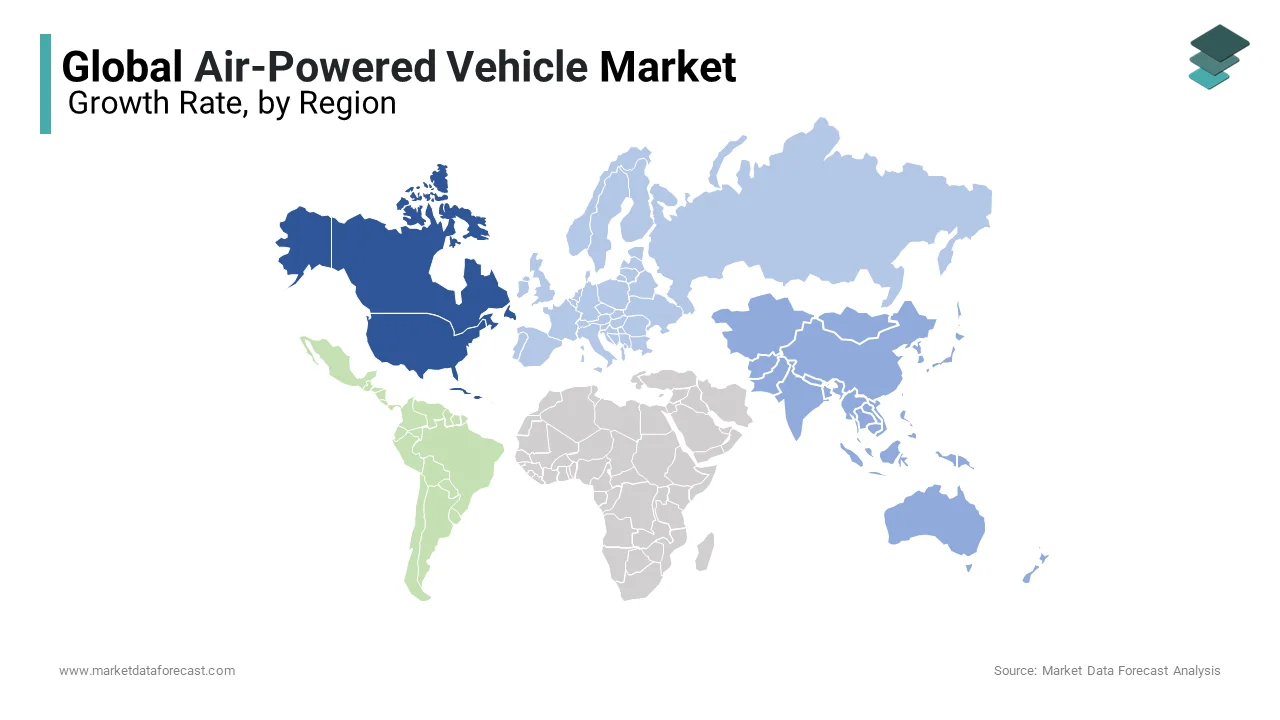Global Air Powered Vehicle Market Size, Share, Trends, And Growth Forecasts Report, Segmented By Product Type (single energy mode, And dual energy mode), Vehicle Type (passenger cars, And commercial vehicles), And Region (North America, Europe, Asia-Pacific, Latin America, Middle East And Africa), Industry Analysis (2024 to 2032)
Global Air-Powered Vehicle Market Size
The global air-powered vehicle market was valued at USD 1.18 billion in 2024 and is anticipated to reach USD 1.63 billion in 2025 from USD 21.77 billion by 2033 and grow with a CAGR of 38.25% during the forecast period from 2025 to 2033.

Air-powered vehicles or compressed air vehicles are environmentally friendly vehicles that use compressed air engines as a replacement for internal combustion (IC) engines for driving and operation according to the principles of compressed air technology (CAT). Pneumatic vehicles use the expansion of compressed air as a source of energy to drive the piston of an engine. The motor used in an air vehicle is called an air motor, which is an inflation actuator that generates useful energy by expanding compressed air. Since fuels do not mix with air in this engine, combustion does not take place in air-powered vehicles.
The increased greenhouse effect caused by most trucking vehicles has fueled the need for automakers to find and develop the fuel of the future. A compressed air vehicle is one of those types of vehicles that emits little or no pollutants. The pneumatic vehicle is powered by pressurized atmospheric gas. As the vehicle runs on compressed air instead of gasoline, the vehicle is considered an environmentally friendly vehicle. In addition, the vehicle is propelled by releasing and expanding steps using an air motor. The air inside the pneumatic vehicle is supplied to the engine by an air injector. Air is pushed down into a small chamber that further moves the crankshaft and propels the vehicle.
MARKET DRIVERS
The growing awareness of green vehicles has expanded the market for pneumatic vehicles. Additionally, stringent government standards and emissions standards aimed at reducing the carbon footprint globally are key drivers of the compressed air vehicle market. Furthermore, compressed air vehicles are more economical than conventional internal combustion engines. In addition, rising fuel prices should favor the market for compressed-air vehicles.
MARKET RESTRAINTS
However, the increasing adoption of BEV and HEV is hampering the growth of the market. In addition, the lower maintenance of compressed air vehicles compared to gasoline internal combustion engines proliferates market growth.
REPORT COVERAGE
|
REPORT METRIC |
DETAILS |
|
Market Size Available |
2024 to 2033 |
|
Base Year |
2024 |
|
Forecast Period |
2025 to 2033 |
|
CAGR |
38.25% |
|
Segments Covered |
By Product Type, Vehicle Type, and Region. |
|
Various Analyses Covered |
Global, Regional, & Country Level Analysis; Segment-Level Analysis; DROC, PESTLE Analysis; Porter’s Five Forces Analysis, Competitive Landscape; Analyst Overview of Investment Opportunities |
|
Regions Covered |
North America, Europe, APAC, Latin America, Middle East & Africa |
|
Market Leaders Profiled |
Motor Development International SA (France), Tata Motors (India), Honda Motor Company, Ltd. (Japan), Groupe PSA (France), Engineair Pty Ltd (Australia), Phinergy (Israel), and Others. |
SEGMENT ANALYSIS
By Product Type Insights
Single-energy mode is predicted to dominate the worldwide air vehicle market, as single-mode pneumatic vehicles only use compressed gas for propulsion. In addition, developing countries and cities have a higher demand for emission-free vehicles, which are expected to have a significant market share during the forecast period.

By Vehicle Type Insights
The passenger car segment has the largest share of the world market due to improved regulation of urban and suburban emissions and the fact that compressed air vehicles are emission-free, which is in line with EU regulations emissions. This, in turn, is expected to fuel pneumatic vehicle market demand in the passenger car segment during the forecast period. Furthermore, the growing demand for compact and light vehicles is expected to drive the pneumatic vehicle market around the world.
REGIONAL ANALYSIS
North America is estimated to represent a significant market share in the global pneumatic vehicle market. The market in this region is dominated by the United States, which accounts for almost 70% of sales. The development of clean energy for vehicles and the growing awareness of maintaining environmental balance are the main drivers of the market in this region.

The Asia Pacific regional market is expected to experience the highest CAGR over the next five years. This region is characterized by some of the emerging economies, notably China and India, which are large auto markets individually. In addition, increasing initiatives by governments and relevant authorities related to environmental protection are also stimulating the demand for compressed-air vehicles in this region. This region is known as one of the main exports of compressed air vehicles due to its low manufacturing costs and the availability of cheap and skilled labor, as well as technologically advanced infrastructure.
KEY MARKET PLAYERS
The prominent players dominating the global air-powered car market include Motor Development International SA (France), Tata Motors (India), Honda Motor Company, Ltd. (Japan), Groupe PSA (France), Engineair Pty Ltd (Australia), Phinergy (Israel).
RECENT HAPPENINGS IN THIS MARKET
- Indian Oil Corporation Ltd (IOCL) has rapidly diversified into the production of alternative forms of energy in recent years. As part of its strategy, the company partnered with Israeli startup Phinergy to develop aluminum-air (Al-air) batteries, and the partners are preparing to establish their manufacturing facilities soon. “We are going to set up a factory.
- The rotary piston engine is an engine that runs on compressed air or phase change coolants. The goal of this idea is to implement vehicles that consume the least amount of energy to perform a certain amount of work, as opposed to an internal combustion engine with its crazy idle at traffic lights; our engine doesn't need to.
- Honda Motor Co's new CEO said Friday that the company aims to increase its share of electric vehicles (EV) and fuel cell vehicles (FCV) to 100% of all sales by 2040.
MARKET SEGMENTATION
This research report on the global air-powered vehicle market has been segmented and sub-segmented into the following categories.
By Product Type
- Single energy mode
- Dual-energy mode
By Vehicle Type
- Passenger cars
- Commercial vehicles
By Region
- North America
- Europe
- Asia Pacific
- Latin America
- Middle East and Africa
Frequently Asked Questions
What is the current size of the global air-powered vehicle market?
As of the latest data, the global air-powered vehicle market is valued at USD 1.63 billion in 2025.
Which regions contribute significantly to the growth of the air-powered vehicle market in North America?
Key contributors to market growth in North America include the United States and Canada, with a focus on sustainable transportation solutions and environmental awareness.
How is the adoption of air-powered vehicles influencing the transportation sector in Europe?
In Europe, the adoption of air-powered vehicles is contributing to the region's commitment to reducing carbon emissions and promoting eco-friendly transportation alternatives.
What technological advancements are driving the air-powered vehicle market in Japan?
Technological advancements in Japan focus on improving air compression technologies and enhancing the efficiency and range of air-powered vehicles, contributing to market growth.
How is the Air-Powered Vehicle Market in China adapting to the increasing trend of electric vehicles?
In China, the market is adapting to the trend of electric vehicles by integrating air-powered solutions into the broader landscape of alternative and sustainable transportation options.
Related Reports
Access the study in MULTIPLE FORMATS
Purchase options starting from $ 2500
Didn’t find what you’re looking for?
TALK TO OUR ANALYST TEAM
Need something within your budget?
NO WORRIES! WE GOT YOU COVERED!
Call us on: +1 888 702 9696 (U.S Toll Free)
Write to us: [email protected]